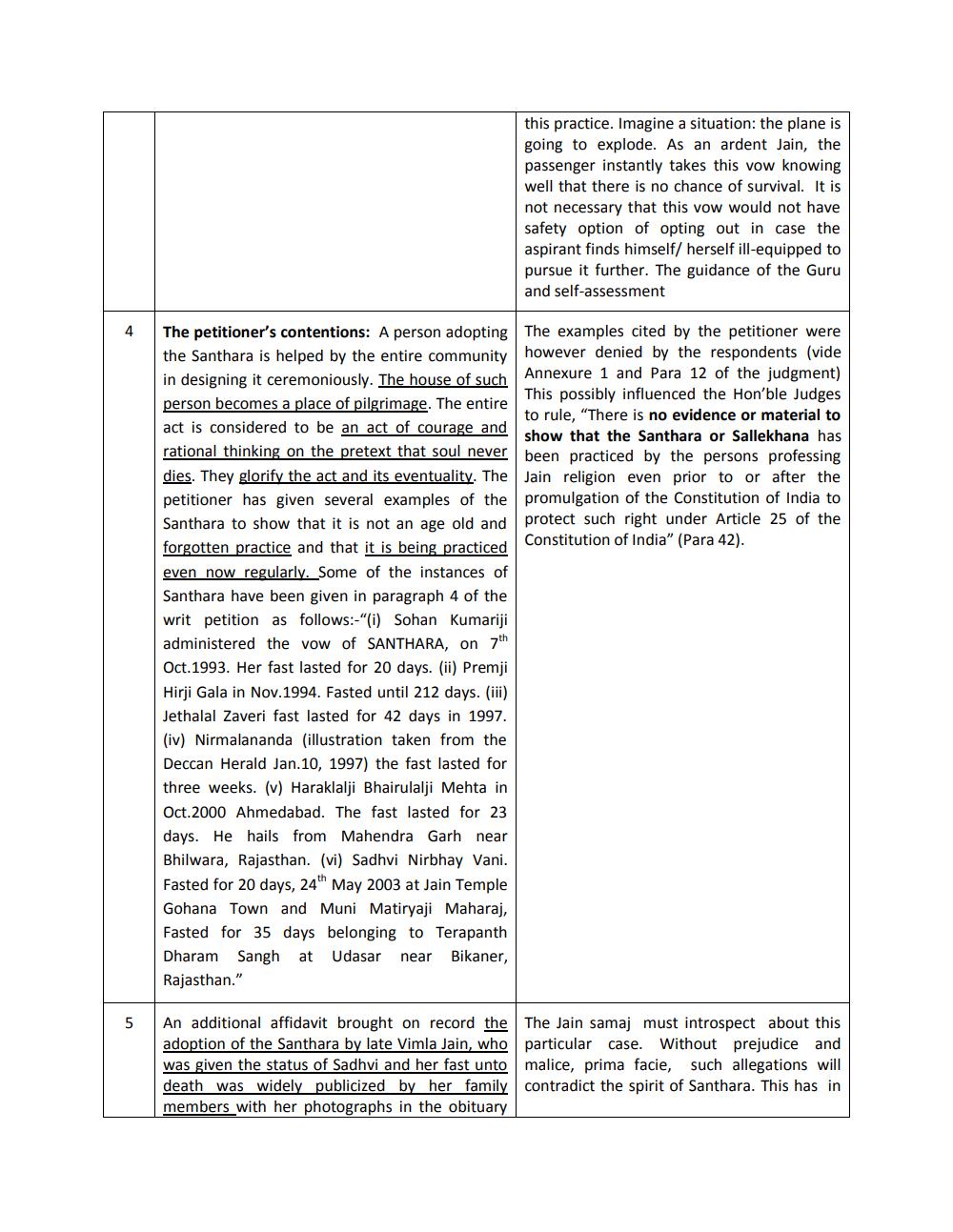________________
4
5
The petitioner's contentions: A person adopting the Santhara is helped by the entire community in designing it ceremoniously. The house of such person becomes a place of pilgrimage. The entire act is considered to be an act of courage and rational thinking on the pretext that soul never dies. They glorify the act and its eventuality. The petitioner has given several examples of the Santhara to show that it is not an age old and forgotten practice and that it is being practiced even now regularly. Some of the instances of Santhara have been given in paragraph 4 of the writ petition as follows:-"(i) Sohan Kumariji administered the vow of SANTHARA, on 7th Oct.1993. Her fast lasted for 20 days. (ii) Premji Hirji Gala in Nov.1994. Fasted until 212 days. (iii) Jethalal Zaveri fast lasted for 42 days in 1997. (iv) Nirmalananda (illustration taken from the Deccan Herald Jan.10, 1997) the fast lasted for three weeks. (v) Haraklalji Bhairulalji Mehta in Oct.2000 Ahmedabad. The fast lasted for 23 days. He hails from Mahendra Garh near Bhilwara, Rajasthan. (vi) Sadhvi Nirbhay Vani. Fasted for 20 days, 24th May 2003 at Jain Temple Gohana Town and Muni Matiryaji Maharaj, Fasted for 35 days belonging to Terapanth Dharam Sangh at Udasar near Bikaner, Rajasthan."
An additional affidavit brought on record the adoption of the Santhara by late Vimla Jain, who was given the status of Sadhvi and her fast unto death was widely publicized by her family members with her photographs in the obituary
this practice. Imagine a situation: the plane is going to explode. As an ardent Jain, the passenger instantly takes this vow knowing well that there is no chance of survival. It is not necessary that this vow would not have safety option of opting out in case the aspirant finds himself/herself ill-equipped to pursue it further. The guidance of the Guru and self-assessment
The examples cited by the petitioner were however denied by the respondents (vide Annexure 1 and Para 12 of the judgment) This possibly influenced the Hon'ble Judges to rule, "There is no evidence or material to show that the Santhara or Sallekhana has been practiced by the persons professing Jain religion even prior to or after the promulgation of the Constitution of India to protect such right under Article 25 of the Constitution of India" (Para 42).
The Jain samaj must introspect about this particular case. Without prejudice and malice, prima facie, such allegations will contradict the spirit of Santhara. This has in




